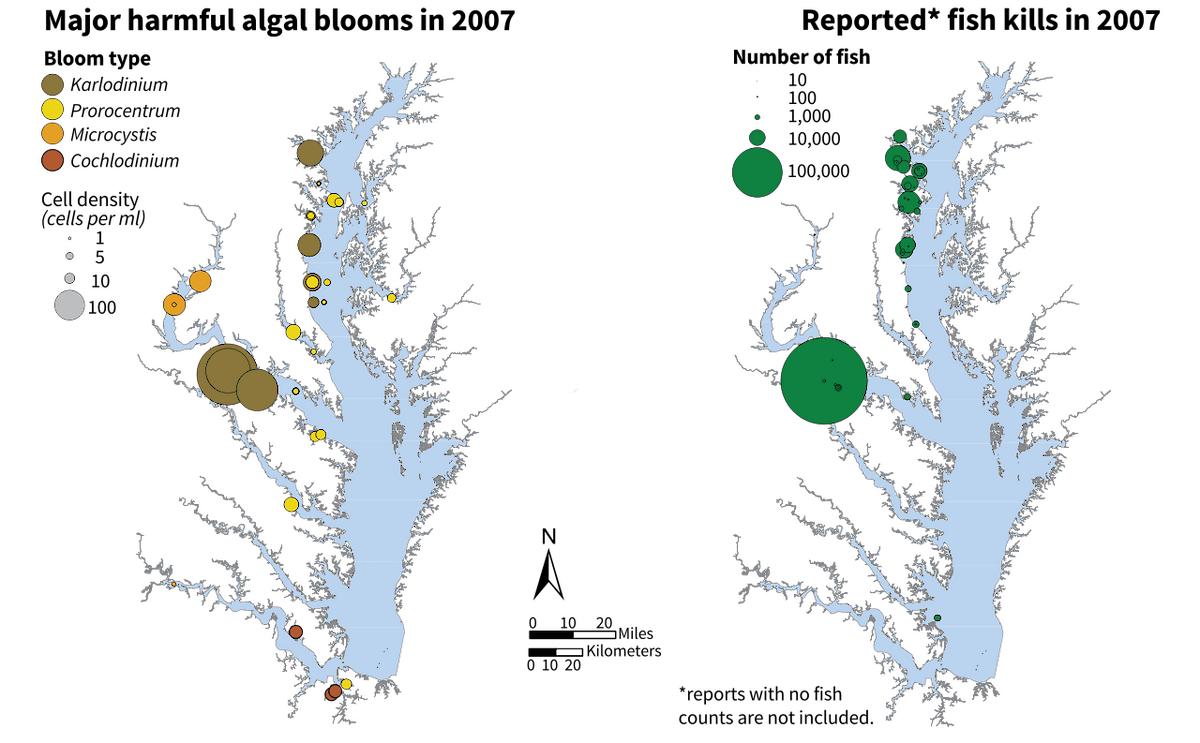
Heavy rainfall was present in the winter and spring of 2007; however, record low rainfall occurred in many regions of the Chesapeake Bay watershed during the summer. The summer drought led to below average levels of sediment and nutrients flowing into the Bay from June to September. However, annual nitrogen loads were similar to the long-term (1990-2007) average due to slightly higher winter and spring flow conditions. This led to numerous harmful algal blooms around the Bay in 2007, mostly in the Potomac River, Lower Western Shore (MD), and Patapsco and Back Rivers regions. Many of the blooms led to fish kills due to algal toxins and/or depleted dissolved oxygen levels caused by the decaying algal blooms.
With fewer sediments and nutrients entering the Bay in 2007, the health of the Bay may have been expected to improve, however this was not the case for water clarity, harmful algal blooms, and fish kills. Harmful algal blooms, such as mahogany tides, occurred in many regions of the Bay during the summer. Reduced levels of dissolved oxygen and algal toxins associated with many of the blooms were the likely cause of the fish kills. However, the Potomac River did not have an occurrence of Microcytis blooms, most likely due to the drought which led to higher than normal salinity levels. The largest fish kill occurred on the Potomac River in July though, with the death of approximately 300,000 fish. Oxygen depletion following algal blooms is thought to be the main cause of the fish kills.

